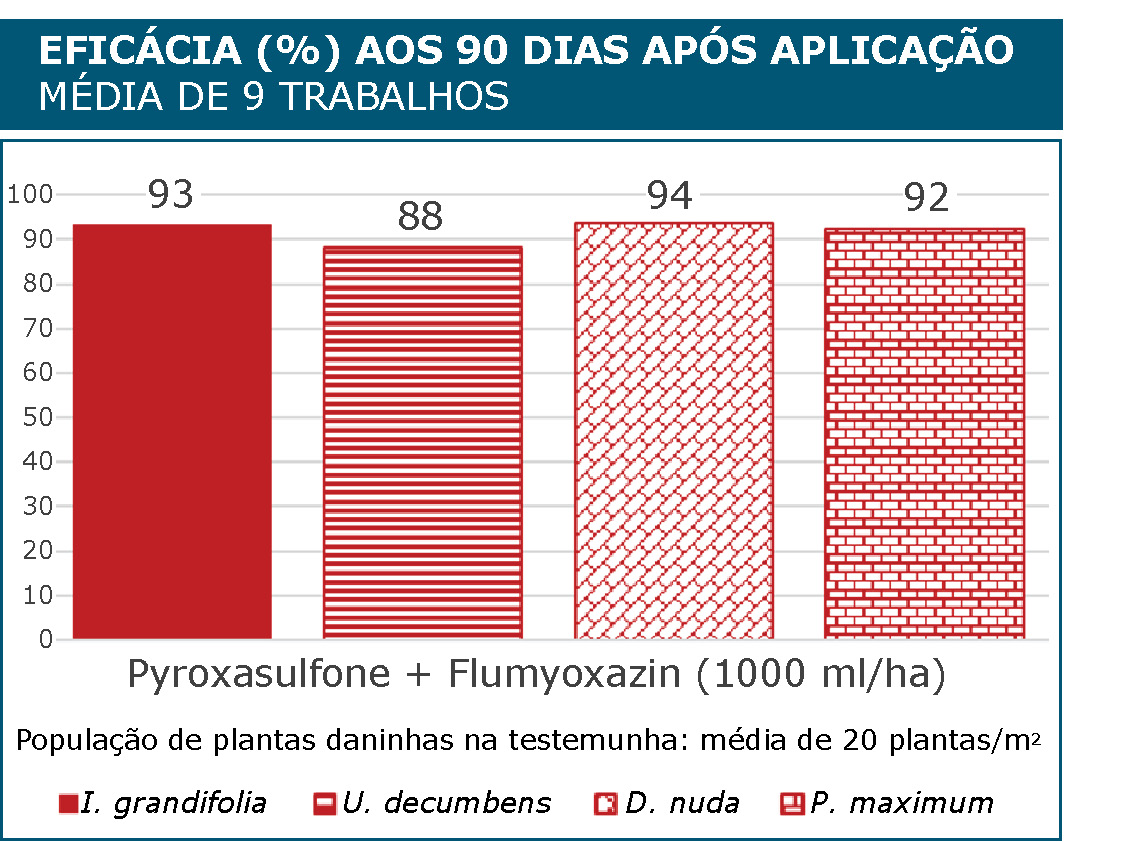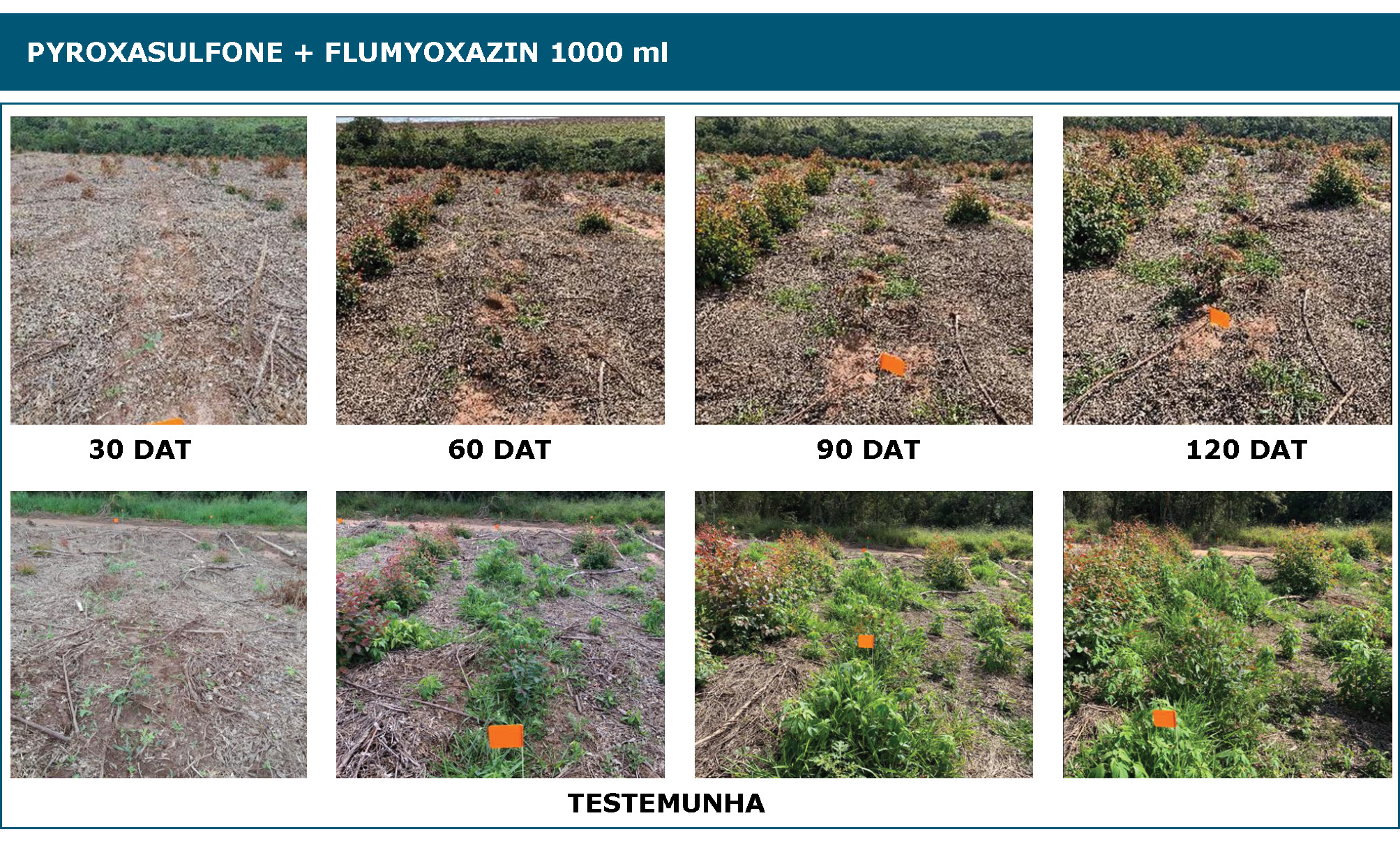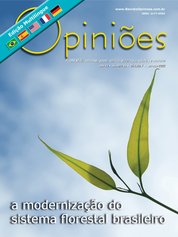Rodrigo Naime Salvador
Consultor de Desenvolvimento de Produtos Ihara
OpCP69
Sistema de controle de plantas daninhas
A silvicultura é uma “indústria à céu aberto” e, portanto, está exposta às mais variadas condições ambientais que podem comprometer a viabilidade da atividade. Os diversos fatores que podem afetar a produtividade estão assim classificados: fatores determinantes, aqueles inerentes à espécie, clone cultivado, qualidade do solo, stand de plantio; fatores indutores, aqueles que podem incrementar o potencial produtivo, como fertilizantes, irrigação, e; fatores redutores, aqueles relacionados a pragas, doenças e plantas daninhas, que podem comprometer o potencial de produção do cultivo.
 O bom manejo cultural atua de forma ativa sobre esses três fatores, buscando a máxima produtividade, entretanto, para isso, é necessário ferramentas especificamente desenvolvidas para atender a cada necessidade. No momento de implantação de uma floresta de eucalipto, vemos a indústria selecionando os clones mais adequados para cada ambiente de produção, realizando um bom preparo e fertilização da área a receber as plantas de eucalipto, porém o controle de plantas daninhas até então sofria com a falta de herbicidas especificamente desenvolvidos para a demanda florestal. A forte parceria entre silvicultura e indústria de insumos tem mudado esse cenário. A silvicultura brasileira tem recebido diversas novas tecnologias para facilitar o manejo de mato na cultura e pode inovar seu manejo com ganhos logísticos, econômicos e ambientais.
O bom manejo cultural atua de forma ativa sobre esses três fatores, buscando a máxima produtividade, entretanto, para isso, é necessário ferramentas especificamente desenvolvidas para atender a cada necessidade. No momento de implantação de uma floresta de eucalipto, vemos a indústria selecionando os clones mais adequados para cada ambiente de produção, realizando um bom preparo e fertilização da área a receber as plantas de eucalipto, porém o controle de plantas daninhas até então sofria com a falta de herbicidas especificamente desenvolvidos para a demanda florestal. A forte parceria entre silvicultura e indústria de insumos tem mudado esse cenário. A silvicultura brasileira tem recebido diversas novas tecnologias para facilitar o manejo de mato na cultura e pode inovar seu manejo com ganhos logísticos, econômicos e ambientais.
Um sistema de produção é como uma máquina em que aportamos insumos, e, após o seu processamento, colhemos o produto desejado, mas também colhemos “resíduos” indesejáveis do processo. O grande desafio é “engenhar” sistemas de produção cada vez mais eficientes que possam reduzir os impactos negativos (resíduos) e aumentar a produção desejada. No sistema de produção florestal, especialmente na etapa de implantação, um produto indesejável presente são as plantas daninhas em níveis populacionais crescentes e apresentando resistência a alguns herbicidas.
Como a silvicultura não contava com muitas opções para o controle de plantas daninhas, herbicidas de ação pós-emergente sempre foram as opções mais utilizadas, e, nessa modalidade, se permite o aumento do banco de sementes, devido à possibilidade de as plantas presentes entrarem em fase reprodutiva antes de serem controladas. Além disso, o uso de agroquímicos de curto residual associado a inúmeras aplicações aumentam a pressão de seleção e o risco de resistência, tornando o manejo cada vez mais caro e ineficiente.
Em função da parceria existente na busca de soluções reais, a indústria florestal está prestes a se livrar desse problema. Foi possível desenvolver duas novas ferramentas que poderão suprir adequadamente a demanda de controle de plantas daninhas durante a implantação com um número 50% menor de aplicações e uma eficiência de controle acima de 90%.
Essa importante parceria de desenvolvimento traz para o Sistema Florestal Brasileiro herbicidas de ação pré-emergente no controle das principais plantas daninhas gramíneas e folhas largas, presentes na produção florestal com uma boa seletividade de posição para o eucalipto e um período de controle que pode variar de 90 a 120 dias. Essa inovação substitui 4 operações de controle de plantas daninhas por apenas duas e mantém a cultura em condições de crescimento e expressão de seu máximo potencial produtivo.
A inovação tecnológica desenvolvida partiu do envolvimento com pesquisadores e consultores atuantes na área florestal e os setores de pesquisa e desenvolvimento das empresas produtoras de eucalipto no Brasil. A partir da identificação do problema da falta de alternativas para o controle das plantas daninhas, iniciou-se uma intensa etapa de pesquisa para avaliar a dosagem adequada, época de aplicação mais favorável, principais plantas controladas e seletividade à cultura. Nessa etapa, foram realizados mais de 100 tratamentos diferentes, alocados em todas as principais regiões produtoras do Brasil, como Rio Grande do Sul, Paraná, Mato Grosso do Sul, São Paulo, Minas Gerais, Espírito Santo, Bahia e Maranhão.
Os resultados foram catalogados, analisados cuidadosamente para se obter uma conclusão do posicionamento de manejo de plantas daninhas. Através do ingrediente ativo “Pyroxasulfone”, desenvolvido em parceria com a silvicultura para o controle pré-emergente das plantas daninhas, ocorrerá, gradativamente, uma diminuição no “banco de sementes” do solo e uma redução da pressão de seleção e do surgimento de espécies resistentes, além de assegurar uma floresta sem matocompetição e com menores riscos de incêndio, portanto mais competitiva. Esse desenvolvimento e parceria não param nessa etapa, já que buscamos a melhoria contínua. Melhores ferramentas, melhor aplicabilidade, resultados mais eficazes e produtividade crescente.
Além do controle de plantas daninhas, o desenvolvimento busca contribuir para o manejo de pragas, como lagartas e o terrível psilídeo-de-concha; busca também alternativas para o controle de formigas e outras demandas que venham a ser identificadas. Nossa crença é: “Acreditamos que, através de uma conduta ética, humilde e engajada, podemos superar e surpreender as expectativas das partes interessadas”. Assim, a produção continuará dando passos consistentes na competitividade internacional e no equilíbrio ambiental.
Além do controle de plantas daninhas, o desenvolvimento busca contribuir para o manejo de pragas, como lagartas e o terrível psilídeo-de-concha; busca também alternativas para o controle de formigas e outras demandas que venham a ser identificadas. Nossa crença é: “Acreditamos que, através de uma conduta ética, humilde e engajada, podemos superar e surpreender as expectativas das partes interessadas”. Assim, a produção continuará dando passos consistentes na competitividade internacional e no equilíbrio ambiental.





